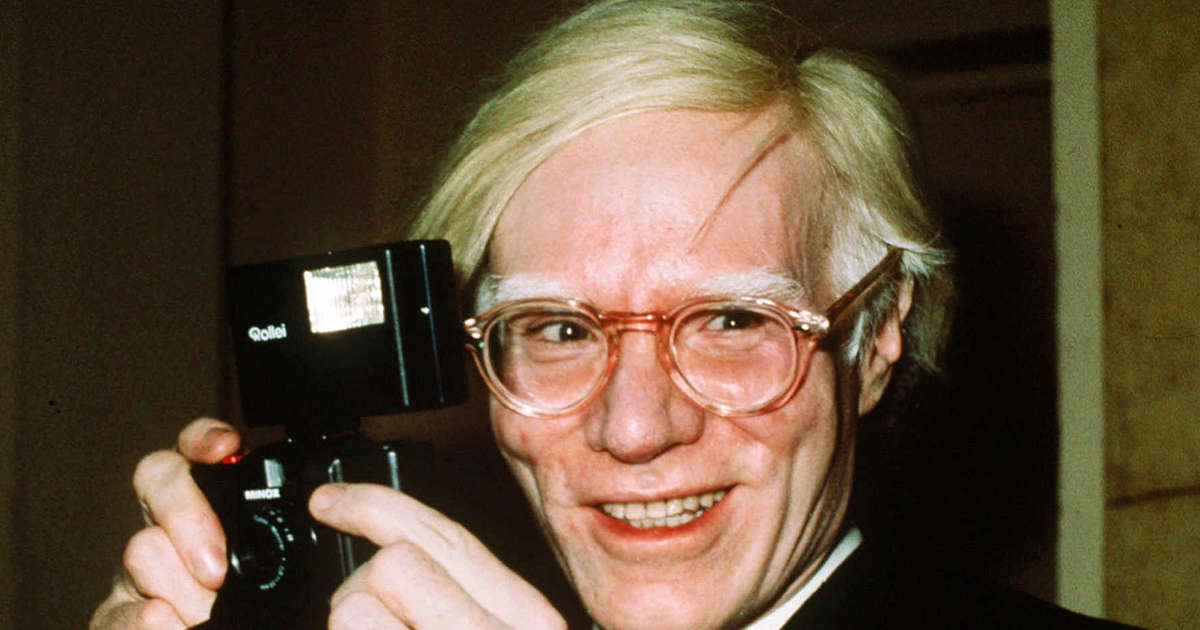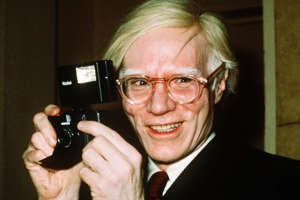[ad_1]
© Richard Drew/AP
In this 1976 file photo, pop artist Andy Warhol smiles in New York. The Supreme Court on Thursday, May 18, 2023, sided with a photographer who claimed Warhol violated her copyright on a photograph of the singer Prince. (AP Photo/Richard Drew, File)
The Supreme Court on Thursday sided with a photographer who claimed the late Andy Warhol should have honored her copyright on a photo of the rock star Prince when creating an iconic artistic image of the late singer.
Justice Sonia Sotomayor wrote for the court majority in the 7-2 decision, which legal experts said could carry far-reaching implications for copyright protection and so-called transformative art. The issue is the legal doctrine called “fair use,” which encourages artistic expression by allowing for the use of protected works without the original creator’s permission.
But Sotomayor wrote that an important factor to consider is whether the copying work comes with a competing commercial purpose. Both photographer Lynn Goldsmith and the Andy Warhol Foundation were selling their images to magazines.
“Goldsmith’s original photograph of Prince, and AWF’s copying use of that photograph in an image licensed to a special edition magazine devoted to Prince, share substantially the same purpose, and the use is of a commercial nature,” Sotomayor wrote. “AWF has offered no other persuasive justification for its unauthorized use of the photograph.”
Justices Clarence Thomas, Samuel A. Alito Jr., Neil M. Gorsuch, Amy Coney Barrett and Ketanji Brown Jackson joined the opinion, which also said: “Lynn Goldsmith’s original works, like those of other photographers, are entitled to copyright protection, even against famous artists.”
The case now returns to a lower court, where Goldsmith can press for damages.
Justice Elena Kagan parted ways with Sotomayor, a fellow liberal, writing a lengthy critique of what she indicated was a wrong-headed and uninformed decision that “will impede new art and music and literature” and “make our world poorer.”
“In declining to acknowledge the importance of transformative copying, the Court today, and for the first time, turns its back on how creativity works,” Kagan wrote, joined by Chief Justice John G. Roberts Jr.
The justices were considering whether the estate of Warhol, who died in 1987, violated copyright law by selling to Vanity Fair magazine an illustration based on a silk-screen portrait of Prince. The image was derived from Goldsmith’s photo of the musician, but it was used without her permission, credit or payment.
A federal district judge in New York said Warhol’s work created something new, a transformation within the “fair use” exception to the law. But the U.S. Court of Appeals for the 2nd Circuit said Goldsmith could press her claim and warned that judges should stay in their lanes.
“The district judge should not assume the role of art critic and seek to ascertain the intent behind or meaning of the works at issue,” the court said. “That is so both because judges are typically unsuited to make aesthetic judgments and because such perceptions are inherently subjective.”
Goldsmith took the portrait of Prince in the early 1980s. Vanity Fair commissioned Warhol to create an illustration for a 1984 article on Prince and obtained a license from Goldsmith, paying her $400 so Warhol could use the photo as an artistic reference. He changed certain aspects of the photo and created for the magazine what is now called “Purple Fame.” Warhol also created 16 silk-screens called the Prince Series, some of which are owned by private collectors and others of which hang in museums.
© Supreme Court Brief for Respondents/Supreme Court Brief for Respondents
The case Andy Warhol Foundation for the Visual Arts, Inc. v. Lynn Goldsmith centers on these images of the late artist Prince.
When Prince died in 2016, Vanity Fair’s parent company, Condé Nast, paid more than $10,000 to the Warhol Foundation for another version, Orange Prince, to illustrate a commemorative magazine. When Goldsmith complained she had not been paid for her photo, the foundation sued her, and a legal battle began.
“I am thrilled by today’s decision and thankful to the Supreme Court for hearing our side of the story,” Goldsmith said in a statement. “This is a great day for photographers and other artists who make a living by licensing their art.”
Joel Wachs, president of The Andy Warhol Foundation for the Visual Arts, said the foundation “respectfully” disagrees with the court’s ruling that “the 2016 licensing of Orange Prince was not protected by the fair use doctrine.”
But he said he was glad the court clarified its decision is limited to the sale of the image to Condé Nast, and “does not question the legality of Andy Warhol’s creation of the Prince Series in 1984.”
At oral argument, the justices were engaged and at times playful in trying to decipher the legal issues at stake. But the result was what the late Justice Ruth Bader Ginsburg might have termed a “spicy” disagreement between Sotomayor and Kagan, who joined the court within a year of each other and are usually allies.
Both opinions featured caustic comebacks and color photographs of work by Goldsmith, other photographers and iconic works by Warhol, who Kagan wrote has “earned his conspicuous place in every college’s Art History 101.”
That wasn’t the point, countered Sotomayor, although she added that Goldsmith was a “trailblazer” as well. “Goldsmith’s work appeared in Life, Time, Rolling Stone, and People magazines, not to mention the National Portrait Gallery and the Museum of Modern Art,” Sotomayor wrote. “She captured some of the 20th century’s greatest rock stars: Bob Dylan, Mick Jagger, Patti Smith, Bruce Springsteen, and, as relevant here, Prince.”
Sotomayor did not dispute that Warhol’s work was transformative, but wrote that he also “paid to license photographs for some of his artistic renditions.” Such licenses “are how photographers like Goldsmith make a living. They provide an economic incentive to create original works, which is the goal of copyright.”
The justice noted that other transformative works by Warhol, such as his famous silk-screens of a Campbell Soup can, were commentaries on society, as opposed to a commercial enterprise to sell soup. And in a concurring opinion, Gorsuch said if the foundation was displaying the Prince series “in a nonprofit museum or a for-profit book commenting on 20th-century art, the purpose and character of that use might well point to fair use.”
Kagan said the majority literally didn’t get it. “There is precious little evidence in today’s opinion that the majority has actually looked at these images, much less that it has engaged with expert views of their aesthetics and meaning.”
Sotomayor, in turn, labeled Kagan’s dissent “a series of misstatements and exaggerations,” from its “very first sentence … to its very last.”
Kagan’s comment that the world will be poorer as a result of the decision, Sotomayor wrote, “will not age well.”
The case is Andy Warhol Foundation v. Goldsmith.
[ad_2]


